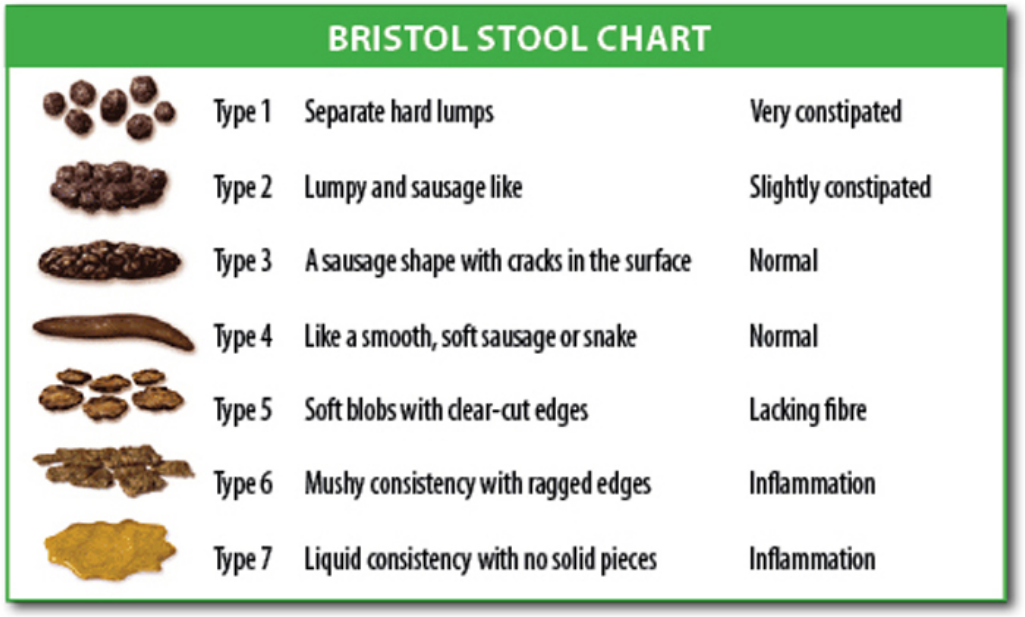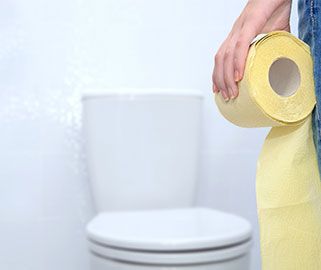Let’s be honest, this is an awkward chat to have; it’s uncomfortable to think about, and even more uncomfortable to talk about (the only time it is comfortable is when you drop it like it’s hot into the porcelain). But, the make-up of your stool is very important, so while you accuse us of talking “crap”, this is the one time we’re happy to do so.
The “bottom” line: keep an eye on the kids next time you drop them off at the pool.
What does a good poop look like?
According to Hippocrates, “all disease begins in the gut”. But, he was a hypocrite, so should we really be taking him seriously? Then again, Hippocrates also said “do as I say, not as I do”, and he would certainly have told you that your gut flora is one of your top priorities.
Bowel function is extremely important for the elimination of waste, toxins and acids. When transitioning to another diet, you will always feel it in the gut first. As the environment changes, the gut flora will need to adapt and certain issues may occur.
There are 3 things to consider when aiming for the bowl perfect poo, namely: frequency, form and colour.
Frequency
You should be laying cable approximately once a day. Two or three times per day may occur if you have a faster metabolism, if you eat more, or have a higher amount of plant fibre in your diet. This could also be the result of a better bacterial count in your gut. More than three? Watch out! It may mean that you are heading towards the dreaded diarrhea.
Form
There are seven main types of poos for you to choose, according to the “Bristol Stool Scale”. Each one shows whether we are digesting or assimilating foods well and eliminating toxins and acids properly.
Type 1 – separate hard lumps/like balls – hard to pass
Type 2 – sausage shaped, but lumpy. Little balls stuck together
Type 3 – like a sausage with crack on the surface
Type 4 – like a sausage or a snake – smooth and soft
Type 5 – soft blobs with clear cut edges, passes too easily
Type 6 – fluffy pieces with ragged edges – mushy
Type 7 – watery, no solid pieces, entirely liquid

Aim for a type 3 rather than a 5 or 6. If it is too soft make sure that you have eliminated all gluten, grain and excess nuts and seeds. Some suggest that eating bone broth (there are 2 free recipes for this in the free week of the Online Banting Program) and gelatine will help. Others suggest that Stool analysis from doctor could show some interesting results. Always remember it is best to have a 3 rather than a 5/6.
If your stool is too hard, it may be useful to have a full stool analysis done and even have your thyroid checked. Pears, chia seeds (in week three of the Online Banting Program, we give you a great recipe to utilise these), nuts and otherseeds may be useful. Magnesiumsupplements and high magnesium food may also prove useful.
Colour
Medium to dark brown is perfect. If it starts moving towards black this may mean that you have some bleeding in upper GI tract. If it is yellow, green or tan, this might mean that you are suffering from fat mal-absorption and that there may be some sort of strain on liver, pancreas and gall bladder.
How to have a great poop
Eat real food – there is nothing like plant fibre, nuts and seeds to keep you regular. Healthy fats such as olives, avocado, butter and coconut oil are good to keep the whole system lubricated.
Don’t forget to have enough protein for strong bowel muscles. Wild fish, seafood, pastured and organic meats, eggs as well as raw and organic dairy could really help things move more smoothly.
Position
Are you sitting? Toilets are a relatively new invention and are really not ideal. Every time you need to evacuate, your rectum gets kinked. The strain – pressure on anal and rectal veins can create problems – hemroids, bowl herniation, other diseases associate with lower digestive tract.
Humans are intended to squat, and people in the east, for the most part, still do. In the west however, people seem to prefer sitting down. For a more comfortable way of doing things, optimise how you sit. All you need to do is find a way to elevate your legs. There are quite a few products out there that will help, such as the “Step and Go” or the “Squatty Potty”. As always there is a DIY version called the “Bourgeoise Toilet Stool” and may be found here
Timing
Make the time to do it every day, and give yourself at least 15mins. This is a very important step. You need to train yourself to “go”, especially if you are struggling with chronic constipation.

Exercise
Get moving! Daily walking, biking and even some yoga poses are great at shifting things round down there.
Drink fluids especially water
Water moves everything along. Surprisingly the process of stool formation needs a great deal of water. Almost 75% of a stool is made up of water, so stay well hydrated.
The final flush
As you can see the process of crafting the perfect poo is a complex one. It requires you to make sure that you are eating real foods, staying hydrated, removing problem foods and most importantly keeping track of how things are going.
There are many ways to speed things up, or slow things down, but it is up to you to find your very own sweet spot.
Resources
- http://www.dietdoctor.com/lchf-common-digestive-issues-ibs
- http://www.dietdoctor.com/acne-and-ibs-vanished-with-a-diet-change
- http://tummyrumble.hultberg.org/lchf-what-why.html
- http://nobunplease.com/ketogenic-diet-treatment-for-ibs/
- https://stanfordhealthcare.org/content/dam/SHC/for-patients-component/programs-services/clinical-nutrition-services/docs/pdf-lowfodmapdiet.pdf
- https://areyoutheresoy.files.wordpress.com/2012/01/low-fodmap.jpg
- http://blog.katescarlata.com/wp-content/uploads/2011/04/GROCERYPOSTER_sept29_blog_HANDOUT.jpg
- http://www.livestrong.com/article/361048-low-carb-diet-and-diarrhea/
- http://www.med.monash.edu/cecs/gastro/fodmap/
- https://www.youtube.com/watch?v=SgBj7Mc_4sc
- http://nobunplease.com/diarrhea-low-carb-keto-diet/
- http://www.livestrong.com/article/473168-xylitol-isomalt-and-diarrhea/
- http://www.livestrong.com/article/361048-low-carb-diet-and-diarrhea/


